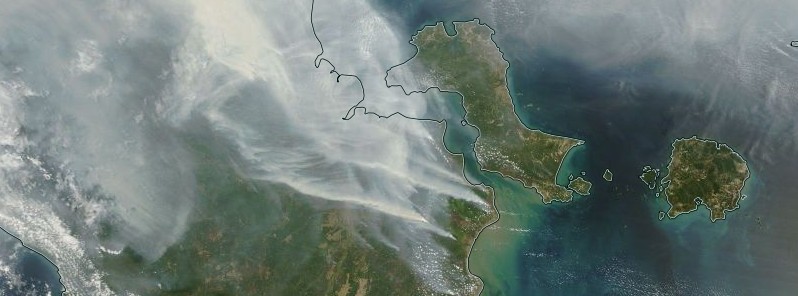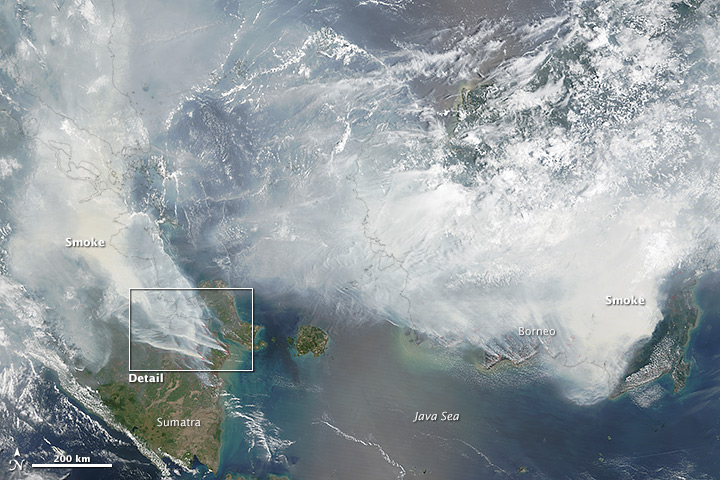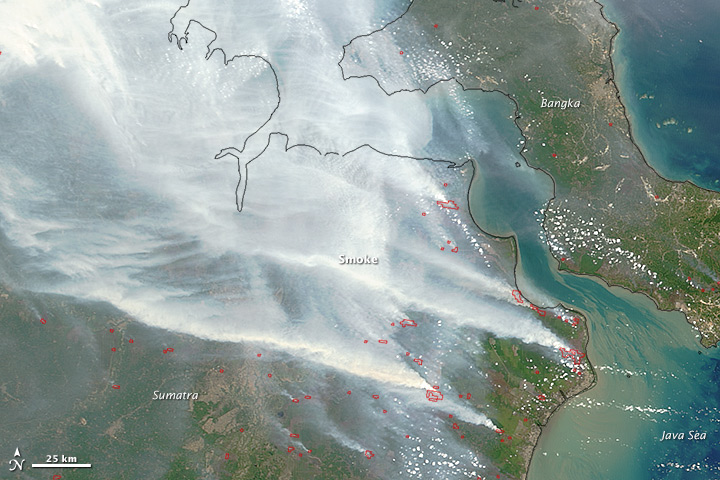The 2015 Indonesia haze may have caused 100 000 premature deaths

Harvard Univesity researchers and their colleagues estimated that hazardous levels of smoke from agricultural fires across Indonesia in 2015 may have caused upwards of 100 000 deaths across Indonesia, Malaysia, and Singapore. The research is part of a larger effort by Harvard and Columbia to provide local stakeholders with an effective tool to assess the public health costs from fires and guide policy decisions. To mitigate the impact of future smoke events, the team developed a model framework which could help governments and policymakers in Southeast Asia identify, in almost real time, the fires with the highest potential to cause damage to human health.
Fires started by farmers in Indonesia, particularly those producing palm oil and timber for wood pulp and paper, are the main culprits of haze events in this region. The fires, largely in coastal peatlands, burn at relatively low temperatures and can smolder for weeks or even months before extinguishing, releasing far more smoke and air pollution than most other types of fires. Usually, firefighters can only put them out with the help of downpours during the rainy season.
“Although the regions experienced several major haze events over the past twenty years, the 2015 event was one of the worst,” said Shannon N. Koplitz, first author of the research published in Environmental Research Letters and Harvard graduate student.
“We understand many of the underlying conditions that lead to these extreme events, and we can often predict when smoke pollution will be severe based on particular meteorological indicators, but regional efforts to mitigate the effects on public health have not been successful.”
During periods of extremely dry weather caused by El Niño and a phenomenon called the positive Indian Ocean Dipole, smoke emissions are considerably higher — either because farmers are taking advantage of the dry weather to burn more land or because once burning, the fires are more difficult to control. Although many fires burn in remote areas of Indonesia, prevailing winds can carry the smoke hundreds of miles to densely populated cities like Palembang in Sumatra, and Singapore and Kuala Lumpur.
The region experienced similar smoke conditions caused by El Niño in 2006, but the Harvard-led team found that deaths from air pollution more than doubled between the 2006 and 2015 events, from about 38 000 to about 100 000. This is largely because of where the fires burned in relation to population centers, and their intensity. Fires in southern Sumatra and nearby Jambi province turn out to be particularly deadly.


Credits: NASA image by Adam Voiland (NASA Earth Observatory) and Jeff Schmaltz (LANCE MODIS Rapid Response). Caption by Adam Voiland.
“Our hope is that this framework can inform early-response efforts to identify areas where effective fire and land use management would yield the greatest benefits to human health, even as the haze event is still unfolding,” said co-author Loretta J. Mickley, Senior Research Fellow at Harvard John A. Paulson School of Engineering and Applied Sciences (SEAS) and co-author.
Being able to identify the most dangerous fires could help save lives in the future, Jonathan Buonocore, co-author and research associate at the T.H. Chan School of Public Health, said.
“For the first time in Indonesia, we have a rapid assessment modeling tool that can quickly estimate the cost to human health of these haze events, as they are happening,” he said.
The research, funded by the Rockefeller Foundation, was led by researchers from the Harvard John A. Paulson School of Engineering and Applied Sciences (SEAS), the Department of Earth and Planetary Sciences, and the T.H. Chan School of Public Health, in collaboration with colleagues from Columbia University.
Reference:
- "Public health impacts of the severe haze in Equatorial Asia in September/October 2015: demonstration of a new framework for informing fire management strategies to reduce downwind smoke exposure" – Koplitz et al. – Environmental Research Letters – September 19, 2016 – OPEN ACCESS
Featured image: Agricultural fires over Indonesia – September 24, 2016. Credit: NASA Terra/MODIS

Commenting rules and guidelines
We value the thoughts and opinions of our readers and welcome healthy discussions on our website. In order to maintain a respectful and positive community, we ask that all commenters follow these rules.